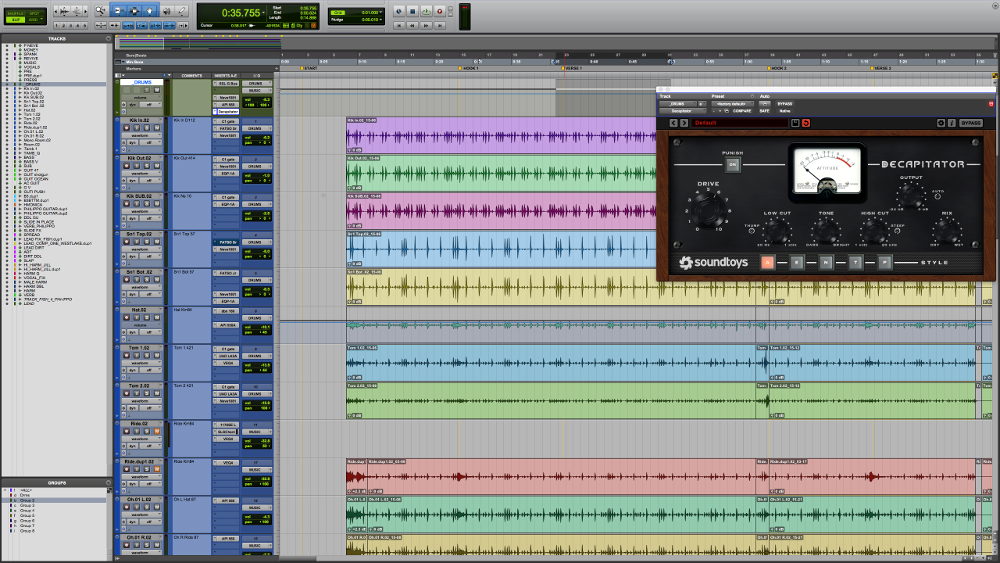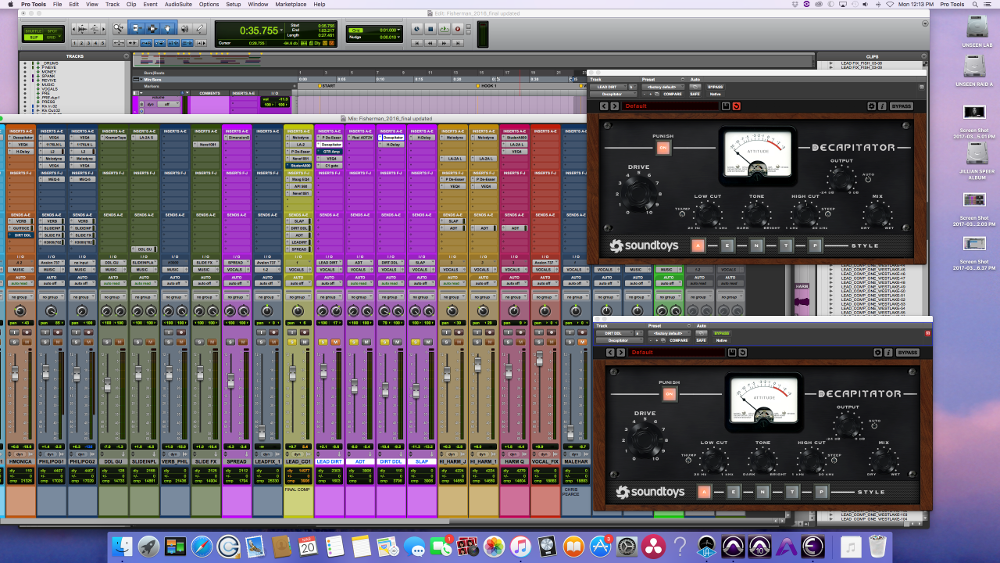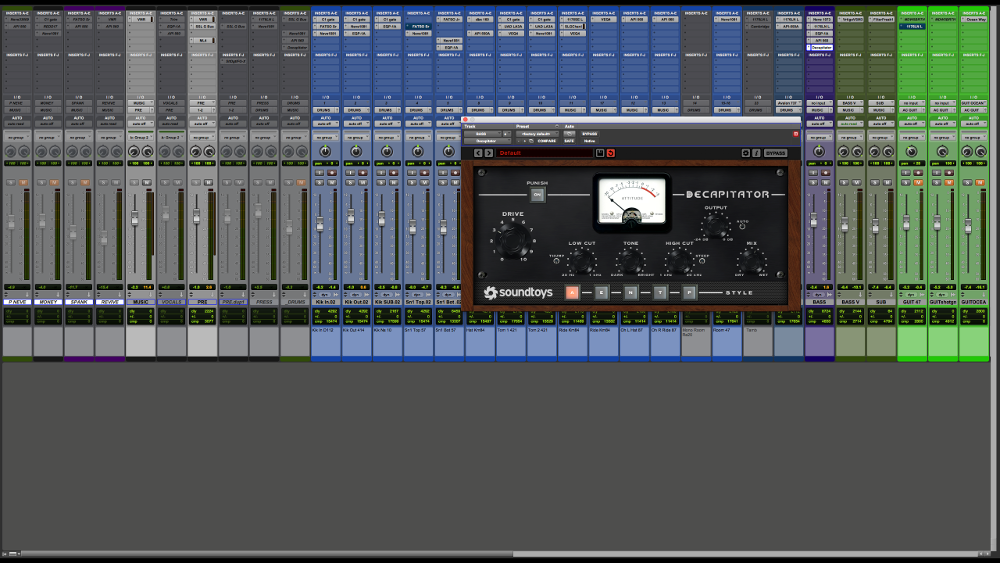3 Techniques: Soundtoys Decapitator – with Mixer Qmillion
If you aim to keep your head on straight—while tilting your ears over just so—then Decapitator is a powerful plugin.
The analog saturation modeler from Soundtoys is noted by mixers early and often during interviews with SonicScoop. This plugin’s unique ability to bring desirable tube/transistor sound—from subtle to extreme—as won a devoted following that spans genres. Modeled after a gaggle of classic boxes, Decapitator offers five different analog saturation modes and a fast-track signal path to shaping the sound.
Guiding us through this latest “3 Techniques” is none other than Qmillion, the accomplished LA-based producer/mixer/composer.
Qmillion’s mix for Robert Glasper’s instant classic 2012 album Black Radio captured a GRAMMY, and his discography expands from there to include Jill Scott, Tweet, and Jillian Speer. Meanwhile, over 60 TV programs and 10 feature films have been scored with his compositions.
Working out of Flyin’ Dread Studios in Los Angeles, Qmillion has far more than a triptych of techniques on Decapitator, but this being “3 Techniques” he’s kept it to three – to get ahead with saturating drums, vocals and bass read forward.
Mixer Name and Website: Qmillion
Mix facility name and location: Flyin’ Dread Studios, Los Angeles
Select Credits: Robert Glasper Experiment, Seun Kuti, Tweet, Chris Dave
Me as a Mixer: My mix philosophy is all about energy. As I am listening and mixing, I am responding to the way the music is making me feel. I know the numbers and math of music and sound, but I think in colors, shapes, and spaces.
I feel like when I am chosen to do a mix it’s because ultimately, I’m going to bring out the energy and emotion in a way that is going to deepen the experience.
My Go-To Plugin: I first learned about Decapitator from a Swedish producer Johan (Jones) Wetterberg who had sent me “She’s on Fire” by Bo Saris to mix for the album. When I opened the session up, he had it on some drum tracks. After I treated the drums with my own process, I went back to A and B the reference to what I had, I knew I had to see what the Decapitator was all about.
What it was giving me was control over the transients, saturation, punch and gain, as well as crunch that I could incorporate as much or as little as I wanted. Having all of this in one plug is why it ended up being a go to plugin for color.
Technique #1 – Phun with Drums: Because I work on a lot of music that has live drums, I almost always use some type of saturation because I come from 2” analog tape. I’m used to hearing tracks come back with tape compression and saturation so that is my internal baseline. So when I put up a session to mix, bottom line I know I’m going to want the drums to be big and phat — saturation is a part of achieving that phatness.
So with this example, the drums sound solid, I’ve got them EQ’d how I want, and compressed a bit at the buss, but I want to hear a lil’ more grime in the overall set. So I have Decapitator on with a pretty aggressive setting, however, I have dialed back the mix level so that only some of the dirty signal is mixed in with the original drums, this can be achieved with parallel processing, but with the mix control, it’s just as easy to place it right on the buss.
DRUMS NO DECAPITATOR
DRUMS WITH DECAPITATOR
Technique #2 – Dirty Vox: Most often I use compression to achieve some of the mild distorted harmonics in a vocal, however, there are moments when more grit is desired.
So on the lead vocal I sent it to a track with Decapitator on it and I am using the level of the track to determine how much effect we hear. Additionally I have it on the slap back delay of her vocal. Used this way it is similar to a vocal being sung through an amp. The top setting is what is on the Lead parallel, and the bottom setting is what is on the Slapback delay.
LEAD NO DECAP
LEAD WITH DECAP
Technique #3 – Less Grace for Bass: On the bass track, I am using it for a bit of compression, sustain, and low end body, as well as some light distortion as if it was pushing the amp slightly. And then I am adjusting how much of it is applied with the mix knob. This method works for Synths as well.
BASS CLEAN
BASS DECAP
FULL TRACK EXAMPLE
Final W.O.W. (Words Of Wisdom): Final word of advice is experiment. It seems obvious, but experimenting yields so much. Try plug-ins on tracks they might not have been intended for, read articles and watch videos on mixing (I regularly do that and am always learning) and then try what you see and take it from there.
— Qmillion
Please note: When you buy products through links on this page, we may earn an affiliate commission.












Dystopia USA
March 27, 2017 at 5:33 pm (8 years ago)i also use decapitator often. bass players love it. that little thump button is very useful, and its great on guitars. sound toys is wonderful stuff. we also like the spl transient plugs too.
Richard Cooper
March 27, 2017 at 9:15 pm (8 years ago)Please drop soundcloud links and use something else
Justin C.
March 28, 2017 at 12:40 pm (8 years ago)We usually include links to wav files in addition to Soudcloud. I’ll talk to David to suggest he include these in his stories in the future. Having the two options seems to make everyone happy.